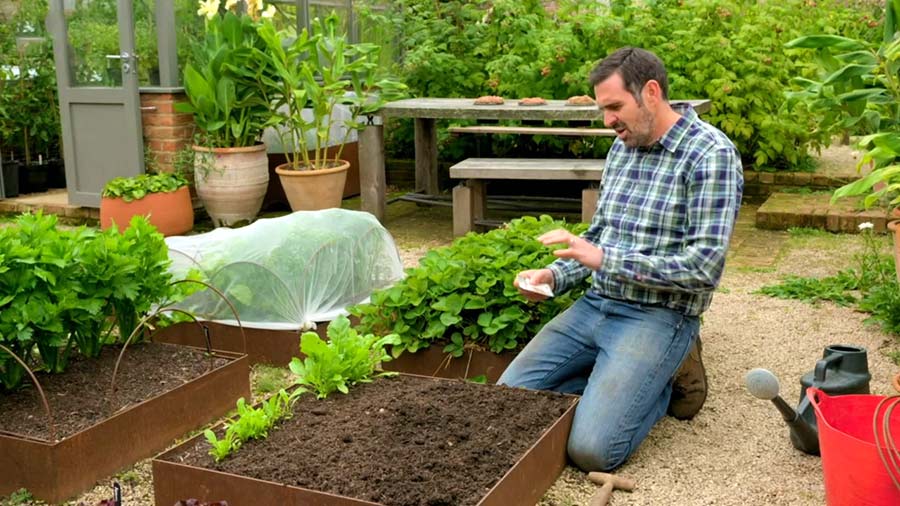Gardeners World episode 26 2019: With Monty away, this week’s episode returns to Adam Frost’s garden where he gives advice on how to prune overgrown evergreen shrubs and adds plants for height to his borders.
Rachel de Thame shows how to maintain containers and refresh with plants that will extend the display into autumn, and the team meet a gardener whose frequent absences from home has influenced the design and planting of his garden.
Gardeners World episode 26 2019
Shrubs: pruning evergreens
Once established, most evergreen shrubs are fairly low maintenance and need little or no regular pruning. Pruning, when required, is generally carried out in mid to late spring.
Many small shrubs such as lavender, and heathers (Calluna, Erica) are generally short-lived and will need replacing after 10 years or so. These shrubs flower on new wood, so pruning these plants annually will improve flowering and extend their life and prevent them from becoming too woody.
Larger shrubs, such as rhododendrons, generally require very little pruning, except for the removal of unhealthy, dead, diseased and damaged shoots. Likewise, slow-growing shrubs also require little or no regular pruning, except the removal of unhealthy shoots in mid-spring.
Formal shrubs can be clipped as for hedges.
Cut flowers: growing and selection
Many garden plants can be enjoyed as cut flowers and foliage in the home, offering cheaper and diverse alternatives to florist flowers. Borders can be adapted to provide cutting material throughout the year. Alternatively, dedicate a part of the garden to growing cut flowers.
When adapting existing borders, plant larger groups of annuals, perennials and bulbs suited for cutting to allow for picking without affecting the overall appearance of the border. Do not forget to incorporate a few well-chosen shrubs and grasses with interesting foliage. Use bulbs to extend the picking season.
Hardy annuals: sowing in autumn
It may seem rather a long way off to be sowing summer-flowering plants in autumn, but the forward planning will be rewarded by an impressive early display. Many annuals can be sown in autumn and will overwinter successfully.
Autumn sowing is suitable for annuals (plants which are sown and flower and die in one year) that tolerate frost. Some of these annuals can be sown directly in the ground, and will withstand most frosts. Others are not quite so robust – they can be direct sown, but covered with cloches or horticultural fleece when frost is forecast. Alternatively, they can be sown in pots and kept frost-free over winter.
